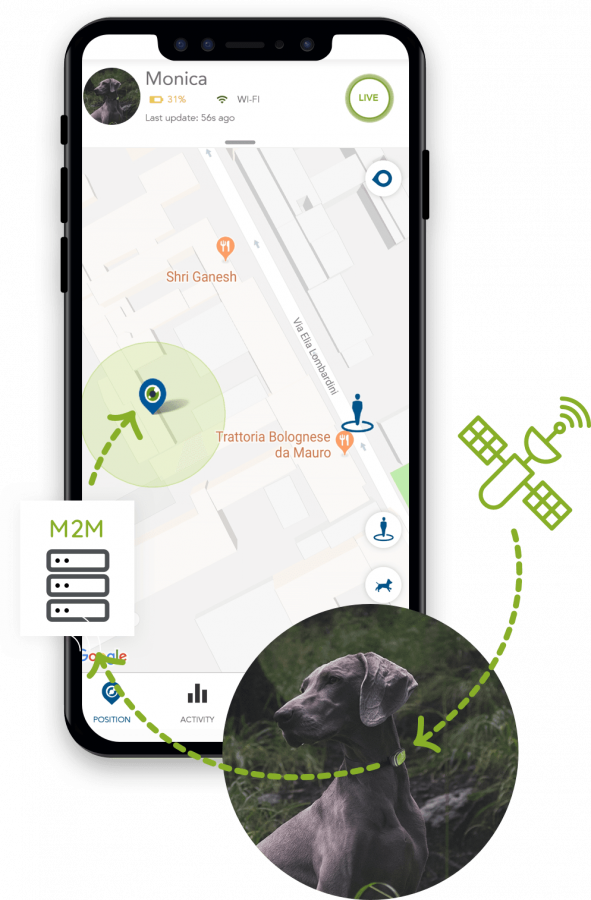For a dog tracker, GPS accuracy is the most important and essential feature. This is perhaps a trivial statement, but in reality, it is not such a foregone conclusion, and the various manufacturers have to resort to various different options in order to achieve ever more accurate results from their tracking systems.
GPS dogs: how does it work?
The basic technology, the one that is most widely used and has become the quintessential way we refer to a localisation system, is GPS or Global Positioning System. In reality, it is only one of the positioning systems and it is particularly the one used by the US military. The full name is NAVSTAR GPS, which stands for NAVigation Satellite Timing And Ranging Global Positioning System, and it consists of a constellation of satellites that use a trilateration system to determine the coordinates of an area of a few metres where the GPS receiver is located. In theory, when we put the collar on, the GPS dog precision is very high, we are talking about a very small area and therefore a small margin of error. However, various factors can interfere with this ideal situation: there can be disturbances to the radio signal, physical obstacles blocking it, etc., and this is why we often see the GPS system coupled with the GLONASS system, the Russian equivalent, which then allows for optimised reception.

With regard to the accuracy of the GPS used for dogs, one problem that can arise specifically with these devices is when the GPS system has to be ‘locked on’. This activity can initially take several minutes because these devices only calculate the position when necessary and are not always connected like phones when used in navigator mode. This feature could be annoying and compromise the actual usefulness of the tracker, so in order to reduce the time it takes for the device to find the nearest satellites to connect to, the Assisted GPS or A-GPS function has been integrated so that it can download the predicted trajectories of each satellite, the so-called ephemeris, on a daily basis, thus making the GPS for dogs much faster as well as more accurate.
